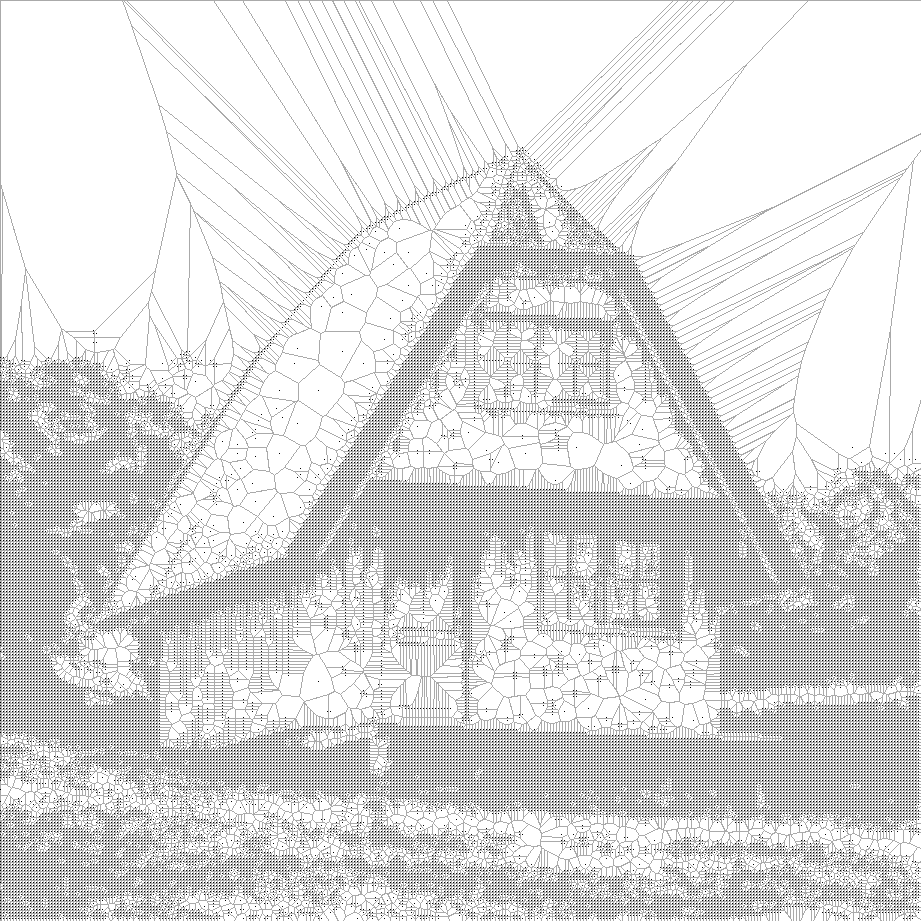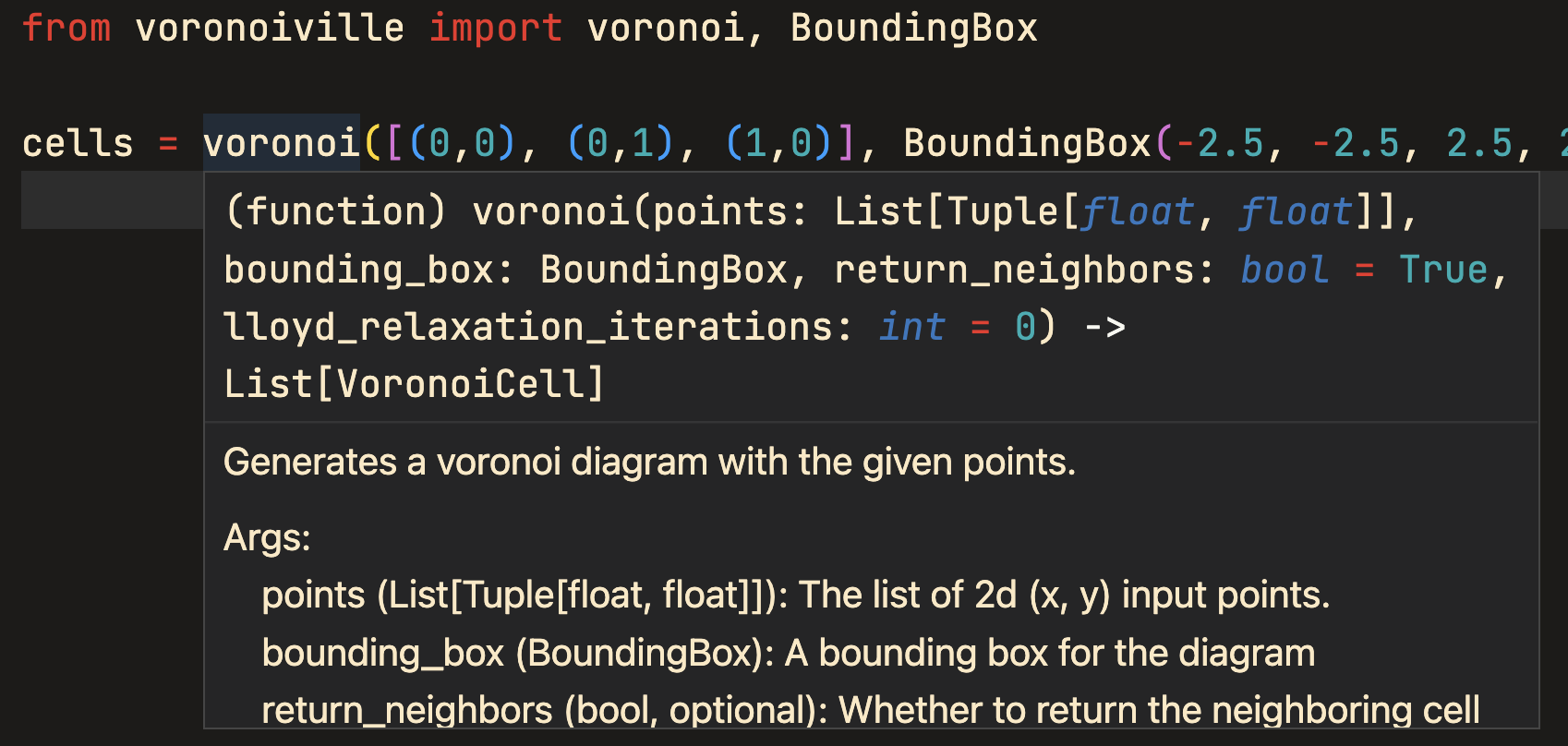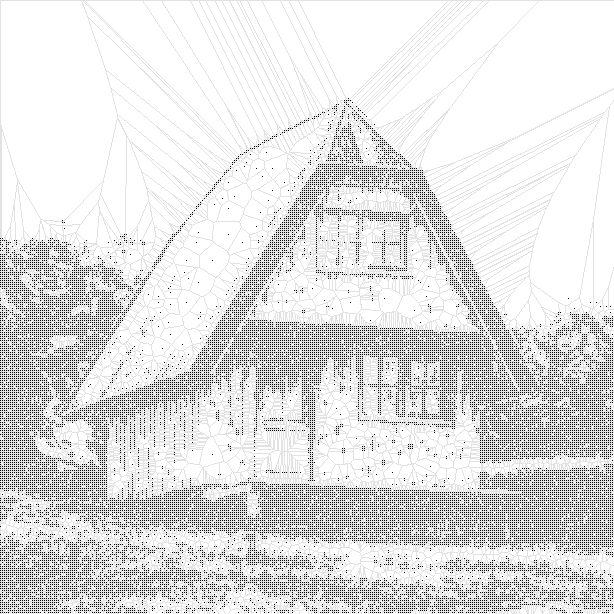Fast Voronoi diagrams in Python written in Rust, thanks to the voronoice crate, PyO3, and maturin.
from voronoiville import voronoi, BoundingBox
cells = voronoi([(0,0), (0,1), (1,0)], BoundingBox(-2.5, -2.5, 2.5, 2.5))
first_cell = cells[0]
first_cell.position
# (0.0, 0.0)
first_cell.site
# 0
first_cell.vertices
# [(0.5, 0.5), (0.5, -2.5), (-2.5, -2.5), (-2.5, 0.5)]
first_cell.neighbors
# [2, 1]
# All cells are on the hull (touch the bounding box)
assert all(cell.is_on_hull for cell in cells)pip install voronoiville
dev:
pip install git+https://github.com/pmbaumgartner/voronoiville
The main tool I've used for Voronoi diagrams is scipy.spatial.Voronoi, which uses Qhull. There were three primary shortcomings with this implementation for my use: (1) I didn't want to include all of scipy as a dependency just to draw Voronoi diagrams; (2) it doesn't support bounding boxes, which forced me to resort to weird hacks or verbose code to fit diagrams within boxes; (3) it returns a matrix you have to index to get the vertices, thus requires some additional code to get things like the corresponding polygons or neighboring cells.
There are notebooks comparing & visually testing against scipy.spatial.Voronoi in the extra folder.
On average, voronoiville.voronoi is ~4x faster than scipy.spatial.Voronoi. It's also ~2-4x faster than shapely.ops.voronoi_diagram. You can get further speedups to about ~5x faster by passing return_neighbors=False to voronoi, which prevents iterating and collecting each cells neighbors. There is more info available in extra/bechmark.ipynb.
Type Hints & Docstrings
Everything should be type annotated and have docstrings, so you can autocomplete/Intellisense.
Other Stuff
Resources:
- Lloyd relaxation algorithm visual: https://douglasduhaime.com/posts/lloyd-iteration.html
A looping GIF of Lloyd's relaxation algorithm




